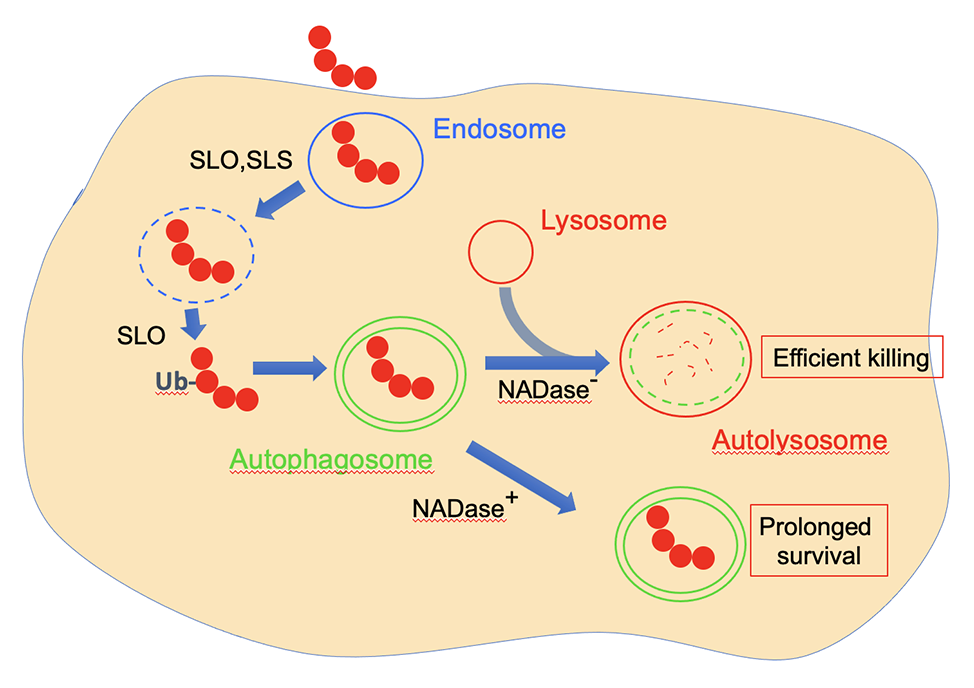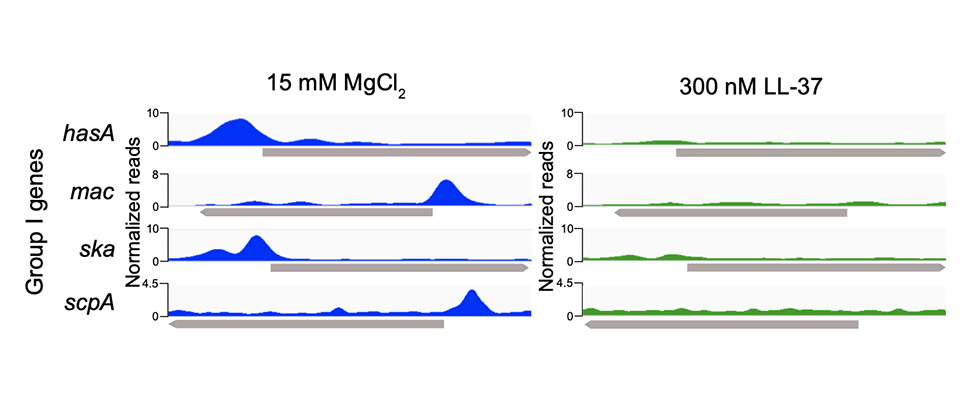Streptococcal Toxins
The lab is interested in the molecular dialog between the bacteria and the human host, and how signaling between them affects the outcome of infection. Specific virulence factors such as the secreted toxin streptolysin O and its co-toxin NAD-glycohydrolase (NADase) inhibit uptake and killing of GAS by professional phagocytes (macrophages and neutrophils) and epithelial cells. The lab has discovered that SLO and NADase prevent intracellular killing of GAS by blocking maturation of autophagosomes in epithelial cells and by inhibiting phagosomal acidification in macrophages. Current studies are focused on identifying host cell receptors for SLO and NADase and understanding how specific interactions with these receptors and between the toxins control intoxication of target cells.

Model of the intracellular fate of GAS in oropharyngeal keratinocytes. SLO and SLS secreted by internalized GAS damage the endosomal membrane and result in GAS exposure to the cytosol. Ubiquitin and galectin 8 bind cytosolic bacteria and damaged endosomes for trafficking into autophagosomes, which eventually fuse with lysosomes. Lysosomal fusion is delayed or inhibited by SLO pore-formation and SLO-mediated delivery of NADase into the cell cytosol, thus prolonging GAS intracellular survival. doi:10.1371/journal.ppat.1003394.g006
Virulence Gene Regulation
The expression of these and other virulence determinants is regulated by the CsrRS (CovRS) two-component system in response to specific environmental signals including the human cathelicidin antimicrobial peptide LL-37. Paradoxically, LL-37 secreted as part of the host innate immune response signals through CsrRS to upregulate multiple GAS virulence factors, thereby promoting a transition from asymptomatic mucosal colonization to invasive infection. The lab is investigating how the CsrRS system activates expression of certain genes and represses others, and how additional regulatory proteins modulate CsrRS-mediated control of gene expression.

ChIP-seq: CsrR binding to promoters of regulated genes. During colonization, exposure of GAS to magnesium in body fluids stimulates phosphorylation of CsrR, which promotes CsrR binding to target promoters and repression of virulence gene expression. During a host immune response, the antimicrobial peptide LL-37 released from inflammatory cells inhibits CsrR phosphorylation, reduces CsrR binding, and derepresses virulence gene expression. doi: 10.1128/mBio.01642-21
